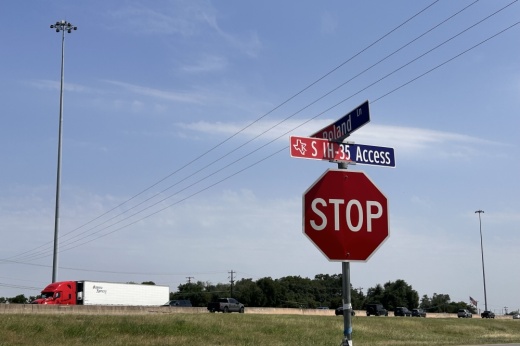The decision follows several concerns raised about traffic safety and flow at the intersection, according to city documents, prompting engineering consultants and city staff to present two design options for council consideration.
The overview
City engineers presented two potential upgrades:
- Option 1: adds a longer deceleration lane to the I-35 frontage road and uses the existing alignment of Roland Lane to improve turning movements
- Option 2: a more extensive, long-term solution that would realign Roland Lane to connect perpendicularly, rather than diagonally, to the southbound frontage road
Option 2, by contrast, carries a price tag of approximately $1.5 million, and would require major changes including a new railroad crossing, quiet zone modifications and a full drainage culvert installation, according to the city presentation.
Council member Robert Rizo made the motion to approve Option 1, with an amendment to extend the deceleration lane so it could support a future transition to Option 2 if needed. He cited the need for a more immediate solution to improve safety and traffic flow on Roland Lane.
“When I first brought this back to council and to staff, I’ve been reached out by several residents in that area concerned about turning in,” Rizo said. “[This project] is a good plus for them because now it allows them to come in safely instead of being rear-ended by somebody going 50, 65 miles an hour ... so that’s really important.”
More details
City Council members discussed whether Option 2 might serve as a better long-term investment due to its comprehensive redesign. However, concerns were raised about the extended timeline and higher cost.
Ultimately, council members agreed that Option 1 would address current safety concerns more quickly and affordably, while still leaving room for future upgrades.





